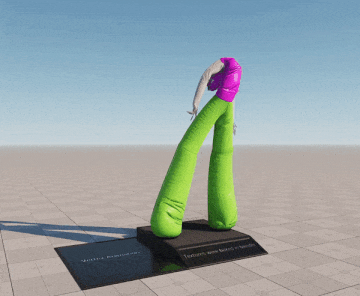Rotate Space Node

Description
This node is used to transform a DIRECTION vector from one space (World, Object, Tangent, View) to another space.
Suppose you have a vector in Object space and you want to use it where the same vector is required but in a different space - Tangent, for example. You can use this node to switch to the required space.
Usage Examples
Rotate Space within Vertex Animation
In the Vertex Animation Sample, the animation is baked into a texture, and the normals are stored in object space (a .tga texture with normals). To properly blend them with another normal map, the object space normals must first be transformed into tangent space.
Since the material is set up to use object space normals, the blended result is then converted back to object space after the mixing process using the Rotate Space node again.
Rotate Space for View-Facing Projection
In this example, the vector (0, 0, 1) in tangent space represents the surface normal. When transformed into view space, it indicates the direction the surface is facing relative to the camera.
Using this transformed vector as UV coordinates results in a projection aligned to the camera view. As a result, the texture appears to follow the camera orientation, effectively creating a view-facing projection.
The information on this page is valid for UNIGINE 2.20 SDK.
